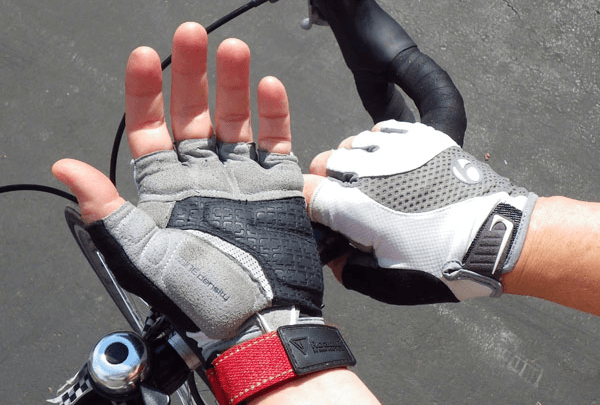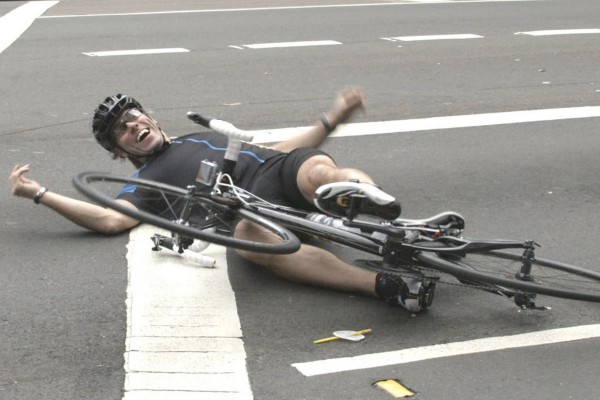The OCBC Cycle Singapore event will be held between 28-30 August. So recently, OCBC Cycle Singapore, organised a clinic to teach participants more about cycling injuries as well as nutrition intake whilst engaging in the sport.
In an informative session at the NUH Auditorium, medical experts from the National University Hospital (NUH) talked about overuse and acute cycling injuries, as well as the importance of bike fit, foot care in cycling and managing nutrition intake for cyclists. Here are the main highlights from the session.
Overuse Injuries
According to Dr Wang Mingchang, a Family Physician and Service Registrar at NUH Sports Centre, cycling is a great low-impact cardiovascular exercise. Due to the nature of the sport, cyclists are not as prone to painful tears and muscle joints problems – compared to some other physical activities.
However, overuse injuries amongst cyclists can still occur through the increasing of training load too quickly, improper bike fit, weak biomechanics and other reasons. In fact, for recreational cyclists, about 85 per cent of them suffer from overuse injuries at some point in time.
Cycling overuse injuries can occur commonly in the following areas.
Neck & Back
Injuries to the neck and back can occur because cyclists usually adopt an aerodynamic position – as they bend forward with their lower back curved, while at the same time, tilting their neck to see straight. This causes chronic back and neck pains and sometimes slipped discs.
Some ways to reduce such injuries though could be to raise the bike handlebars or to adjust the saddle so that it tilts upwards slightly – according to Dr Wang.
Hands & Wrist
Nerve injuries commonly occur in the hands and wrist amongst cyclists. The doctor explained that this is because they are often gripping the handlebars of the bike tightly for long periods of time – and so their hands can be in the same position for hours.
Such injuries can be prevented by investing in padded gloves to reduce pressure on the nerves, or frequently changing the hand position to prevent such nerve injuries.
Buttock & Groin
Amongst cyclists, the buttocks and groin are very prone to chafing because of the constant rubbing between the saddle and the groin. This is made more unpleasant in wet weather.
To prevent such chafing injuries, Dr Wang recommends that cyclists should wear padded shorts or apply lubricants such as talcum powder or Vaseline to the chafing-prone areas.
Knees
Knee injuries are common not only in cyclists but also in runners. They usually happen when the athlete does too much mileage, too soon – and the body cannot keep up with the sudden increase in mileage.
So to prevent such injuries, Dr Wang recommends that you should limit your increase in training mileage to no more than 10 per cent a week.
Feet
Foot pain and numbness amongst cyclists can usually happen because of incorrect or ill-fitting shoes, or an incorrect position of the feet on the bike pedals.
Dr Wang added that such injuries can be prevented by ensuring that the ball of the feet are in line with the spindle of the bike pedals. As well, you could also invest in special cycling shoes or choose those with a wider toe box, to prevent such nerve irritation – which generally causes the numbness.
Acute Traumatic Cycling Injuries
According to Dr Lai Kah Weng, an Associate Consultant at the NUH Sports Centre, about 75 per cent of fatal or serious cycling injuries from accidents take place in urban areas and 75 per cent of these are at road junctions. And contrary to popular belief, 80 per cent of such accidents happen in broad daylight.
Head injuries
Dr Lai said that head injuries are the main cause of fatal cycling accidents – about 40 per cent of total cycling injuries and 45 per cent of child cyclists are victims to these. However wearing a helmet can greatly reduce the severity of such head injuries – cyclists wearing helmets reduce their chances of sustaining a fatal head injury by 85 per cent.
Chest, Abdomen & Shoulder injuries
Chest, abdomen and shoulder injuries also occur, but these are more rare. They may need surgery in extreme cases, but most of the time, while cyclists going at lower speeds such as 30 to 40kmh, such injuries are usually in the form of abrasions which can be self-treated.
Knee Injuries
Most knee injuries amongst cyclists at lower speeds, such as 30-40kmh, are usually abrasions, which can easily be treated at home too. But Dr Lai explained that if you are cycling at higher speeds, such as 60kmh, there may be lacerations so there could be a need to seek medical assistance to ensure that the knee structure is not damaged. If there is a direct impact on the knee cap, it might split into half – and surgery would then be required to fix it up.
Ankle & Toe Injuries
Ankle and toe injuries are usually in the form of sprains or ligament tears. If the foot still looks relatively normal though, the injury is not so serious and can be self-treated. But if for example, the foot has twisted in the opposite direction, surgery may be required.
How to fall properly off the bike
If you know that you are about to fall off the bike, Dr Lai recommends that you do not stretch out your arm to break the fall. Instead you should hold on to the handlebars as you are coming down and use your leg to break the fall if you have to. This is because the leg can withstand a higher amount of pressure than the arm. Go down together with the bike and then subsequently throw the bike off if you have to.
Many cyclists tend to protect the head with their hands when they are about to fall. But if you are wearing a helmet, it is no point trying to protect the helmet with your hands – as the helmet can withstand more pressure than your hands can.
Returning to the bike post-accident
After a traumatic accident, the body will generally heal itself, so the physical part is not a problem. However it may be a trying mental hurdle to get back onto the bike again after that. Dr Lai recommends that you should begin with baby steps such as cycling through park connectors and smaller roads with little traffic, before heading out to the main roads with your bike again
Importance of Bike Fit
According to NUH Sports Centre’s Senior Physiotherapist, Mr C Durai, bike fit is important too, because it plays a major role in causing overuse injuries. At the same time, poor bike fit can also limit the body’s lung capacity or inhibit the abilities of the hips and hamstrings.
Anyone who spends any length of time riding a bike will need proper bike fit – to improve comfort and performance as well as to prevent stress injuries.
How to determine bike fit
Generally there is a specific way to determine bike fit. (See Video).
Foot Care & Cycling
Your feet play an important role in cycling and proper management of foot-related cycling injuries, according to NUH podiatrist, Ms Kate Carter. So if you are a serious cyclist, she recommends that you invest in a good pair of cycling shoes, depending on what type of cycling you will be engaging in e.g. mountain biking, road cycling or triathlons. For recreational cyclists who engage in the sport for leisure, a pair of cross-training shoes will be sufficient.
Some injuries can be treated with good shoe fit
She also adds that common lower limb injuries amongst cyclists such as shin splints or Achilles Tendonitis can be eventually rectified with good shoe fit but if the pain is persistent though, it is recommended that you check it out with a professional.
Fungal infections and ingrowing toenails amongst cyclists are also generally caused by poor fitting or narrow shoes too.
Nutrition Intake and Cycling Performance
According to Mr Kejendran, a Dietician at the NUH Sports Centre, sports nutrition is crucial to ensure that athletes can perform at their optimum performance for longer periods of time. This is especially crucial for endurance sports such as cycling.
Carbohydrates
Generally, carbohydrates are the primary source of fuel for endurance cyclists because the body uses carbs and stores them as glycogen to fuel the muscles. Inadequate carbohydrates leads to muscle fatigue and affects performance.
There are various types of carbohydrates. Complex carbs are generally starchy foods that take longer time to digest such as rice, noodles, bread and pasta. Simple sugars on the other hand, digest very fast and they include table sugar, sports drinks and lollies.
Proteins
Besides carbs, endurance athletes also require proteins for muscle repair and maintenance after a long or hard session. Some types of proteins include meat, fish, seafood and eggs. The dietician explained that for vegetarians, they can get proteins from nuts, legumes and dairy products.
Hydration
Hydration is also important to ensure optimum performance amongst athletes because insufficient hydration can cause sluggishness and result in dehydration. So Mr Kejendran recommends that you should drink throughout the day, not just before cycling. For activity lasting more than 30 minutes, you should also take small amounts of fluid during exercise.
For activities less than one hour, water is good, but for intense activity lasting longer than one hour, you should take sports drinks to replenish the lost electrolytes.
Carbo Loading
According to the dietician, carbo loading is an important process to maximise muscle glycogen stores prior to endurance competition. It is done one to three days before competition and intense activities are also cut down during the same period.
This is recommended for activities lasting longer than 90 minutes, such as long distance cycling, marathons and triathlons.
During carbo loading, it is recommended to take eight to 12 grams of carbohydrates per kilogram of body weight each day – to increase the body’s glycogen stores and improve endurance exercise performance. It is common to gain about 2kg of weight during this period – according to Mr Kejendran.






Leave a Comment